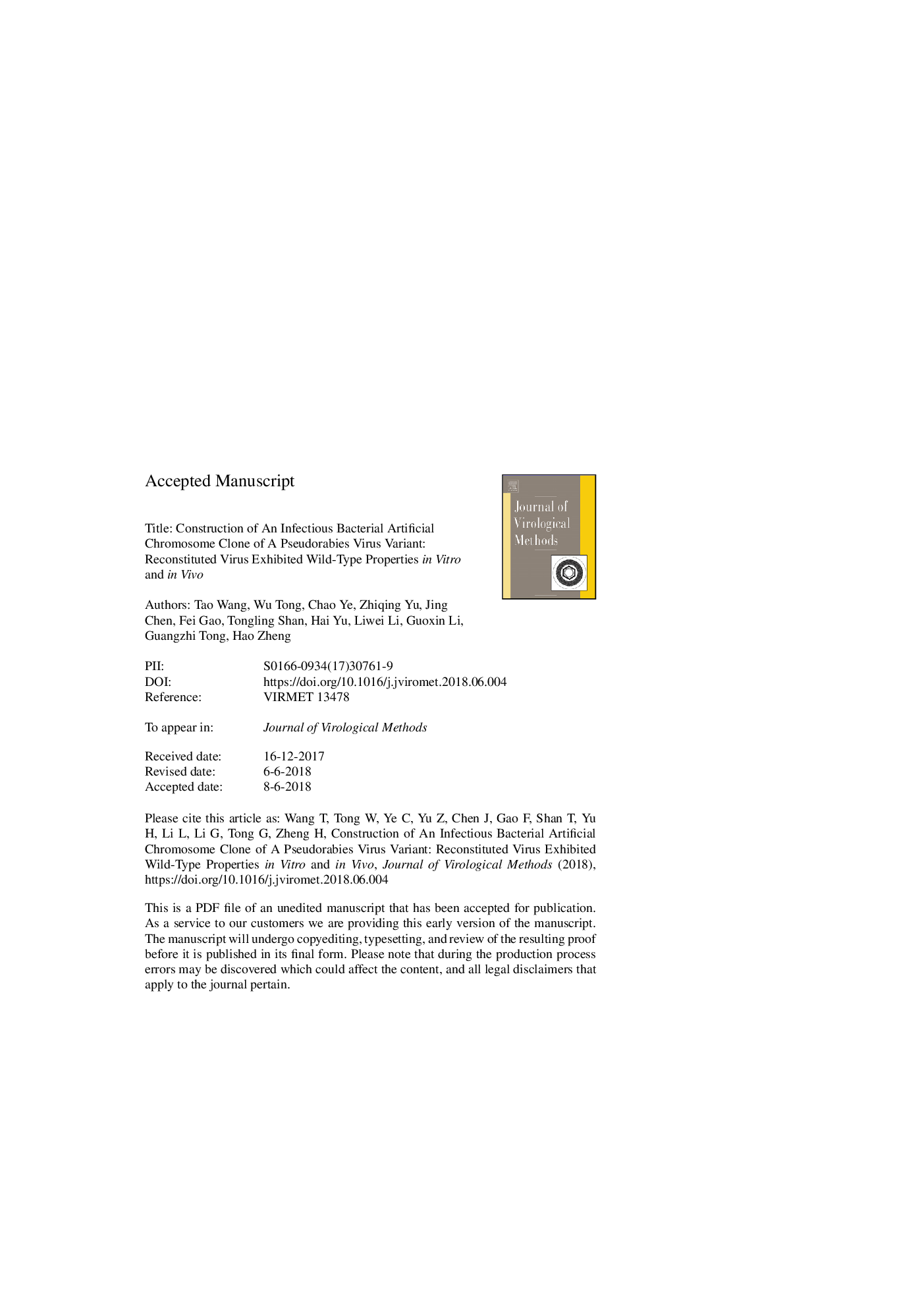| Article ID | Journal | Published Year | Pages | File Type |
|---|---|---|---|---|
| 8747010 | Journal of Virological Methods | 2018 | 30 Pages |
Abstract
Since late 2011, a pseudorabies virus (PRV) variant with increased virulence in old pigs had caused major disease outbreaks and great economic losses to the pig industry in China. The gene mutations that contributed to the increased virulence were unclear. To study the basis of the enhanced pathogenicity, an infectious bacterial artificial chromosome (BAC) clone consisting of the complete genome of the PRV variant was developed. Using homologous recombination and Cre/LoxP recombination, the recombinant virus rJS-2012-BAC carrying a BAC insertion downstream of the open reading frame (ORF) of gG was constructed. The circular genome of rJS-2012-BAC was extracted from infected Vero cells and transformed into Escherichia coli DH10B, generating the BAC clone pBAC-JS2012. The loxP sites flanking the BAC vector were used to excise the BAC sequences using Cre recombinase. The reconstituted BAC-excision virus, vJS2012â¯L, from pBAC-JS2012 exhibited similar biological properties to the wild-type virulent strain JS-2012. To manipulate the BAC clone pBAC-JS2012, the galK selection system was adopted to delete the gI/gE gene from pBAC-JS2012 in E. coli and to generate the gI/gE-deleted virus vJS2012-ÎgE/gI. The BAC clone, pBAC-JS2012, retained the same level of virulence as its parent strain and was easily manipulated using a galK system which would facilitate the study of the enhanced pathogenicity of the PRV variant as well as other studies on PRV.
Related Topics
Life Sciences
Immunology and Microbiology
Virology
Authors
Tao Wang, Wu Tong, Chao Ye, Zhiqing Yu, Jing Chen, Fei Gao, Tongling Shan, Hai Yu, Li Liwei, Guoxin Li, Guangzhi Tong, Hao Zheng,
